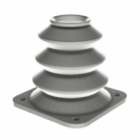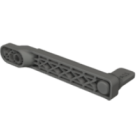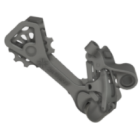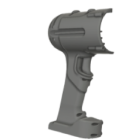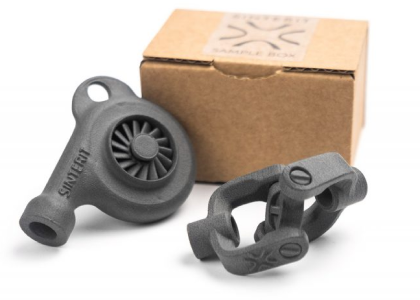Understanding 3D print settings for better results
A successful 3D print isn’t just about the quality of your model or the capabilities of your printer — it’s equally dependent on how well your 3D print settings are dialed in. These settings directly control how your printer interprets the sliced data and how material is deposited layer by layer. Understanding and fine-tuning these parameters is essential to achieve consistent results, minimize failures, and match the printed output to your design intent.
How 3D printer settings influence the final print
At their core, 3D printer settings govern the relationship between machine motion, extrusion behavior, material characteristics, and environmental conditions. Whether you’re working with FDM, resin, or powder-based systems, the fundamental idea is the same: you’re controlling how the printer physically constructs your part, one layer at a time.
These settings determine how thick each layer will be, how much material is laid down per move, how fast the printhead travels, and how the part adheres to the bed or supports itself as it builds up. Small changes can drastically affect print time, visual quality, dimensional accuracy, or mechanical strength. This is why getting familiar with key parameters — and understanding how they interact — is one of the most important steps toward mastering additive manufacturing.
Essential 3D print parameters and their impact
While slicers often offer hundreds of tunable options, the following 3D print parameters are the most impactful and universally relevant:
- layer height: this controls the thickness of each printed layer and directly affects surface smoothness and resolution; lower layers create finer details but increase print time;
- print speed: determines how fast the printer moves while extruding; higher speeds reduce time but can cause layer shifting, poor adhesion, or under-extrusion if not matched with temperature and flow;
- nozzle and bed temperature: critical for adhesion, flow, and material behavior; different materials require different temperature profiles, and even small shifts can cause warping or stringing;
- wall/shell thickness: defines how thick the outer perimeter of your part is; thicker shells provide strength, better sealing, and improved surface durability;
- infill pattern and density: controls the internal structure of the print; you can adjust infill percentage for weight, strength, and select patterns that match the part’s mechanical needs;
- retraction settings: these determine how and when the filament is pulled back to prevent stringing during non-print moves; poor retraction leads to blobs, oozing, or weak spots;
- cooling: fan settings affect how quickly layers solidify. For materials like PLA, cooling is essential; for others like ABS or nylon, too much airflow can cause warping.
In professional slicers such as Simplify3D (often referred to by users as S3D printer settings), these parameters can be set globally or per process, allowing users to apply different strategies across different zones of the same print.
Balancing quality, speed, and strength in 3D printing
One of the biggest challenges in tuning 3D printer settings is managing trade-offs. For example, higher infill improves mechanical strength but increases material use and print duration. Lower layer heights give cleaner surfaces, but also demand more time and make mechanical bonding between layers more sensitive to cooling and motion parameters.
The key is to align your settings with the goal of the print:
- for concept models, prioritize speed and surface finish,
- for functional parts, focus on dimensional accuracy, inter-layer adhesion, and structural load paths,
- for aesthetic prototypes, optimize shell thickness, surface quality, and orientation to minimize post-processing.
Testing, iterating, and documenting changes is the only way to develop reliable print profiles. Over time, you’ll learn how to adjust one parameter to correct or balance another — and that skill is what separates casual users from experienced operators.
Why fine-tuning 3D printer settings is crucial
Mastering 3D print settings is fundamental to producing high-quality, repeatable results. Each print parameter — from layer height to retraction speed — plays a role in shaping the final part, and every setting has a technical impact that ripples through the build process. Whether you’re refining FDM profiles, adjusting resin exposure times, or optimizing powder bed parameters, understanding how these settings interact is the key to controlling your workflow. In additive manufacturing, precision starts long before the print begins — and it lives inside your slicer.
Explore also
- What is the 3D printing process?
- 3D printing process step by step
- How to make a 3D model for printing?
- What is 3D slicing in printing? Key to print quality and success
- The additive manufacturing process: how 3D printing builds layer by layer
- Printing 3D
- What is post-processing?
- Why do 3D prints fail?
Related categories




